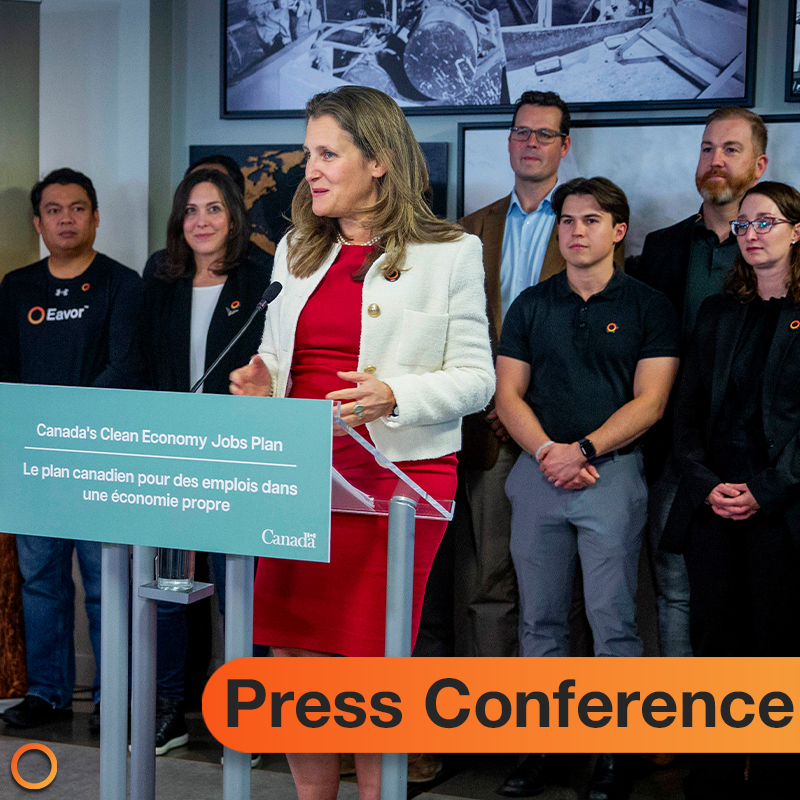A fantastic article posted on the Daily Oil Bulletin written by Maurice Smith, which can be found in full here – Link.
The full article is quite long, so we’ve broken it down by section for you, we’ll post a new section each day.
—————-
This is part of an ongoing DOB series, titled “New Directions, New Possibilities,” which examines energy innovation, sustainability challenges and opportunities. Previous articles looked at petrolithium development (Link) and how Alberta start-ups are in a global race to grab a piece of the booming lithium supply chain (Link).
Secluded Markets
The other low hanging fruit are island markets represented by literal islands or figuratively isolated areas, like conned military bases and remote arctic communities. “We’re looking at opportunities in all of those places because they are isolated, and the marginal cost of power [is often] set by diesel. They’re also constrained in space and don’t have a big grid that can absorb a lot of wind and solar power. They need a complete solution, and so they are ideal markets for us.”
Military bases basically want to pretend they are an island, said Redfern, since they don’t want to be reliant on a grid connection, a pipeline or fuel deliveries that extend beyond the base, nor to potentially vulnerable windmills and solar panels. “They prefer something that’s buried right underneath the base, hardened, impervious to hurricanes or terrorist attack. If we can prove that up, we’ve got hundreds of clients right there.”
Northern communities can also resemble islands in their isolation from electric grids. In January, Eavor announced a deal with the Yukon-based Carmacks Development Corporation (CDC), wholly-owned by the Little Salmon/Carmacks First Nation, to deliver baseload geothermal power and heat. An Eavor-Loop will generate about three megawatts of electricity and is expected to cost $30 million to install, with construction set to start early next year.
“Of all the places in Canada, it’s the best sweet spot because the alternatives don’t work that far north, but geologically it’s still reasonably hot. And we have good local buy-in because there’s no other solution that’s actually very popular,” said Redfern.
Arctic cold actually increases geothermal efficiency, since the bigger temperature difference means more power. “So our power production actually peaks on the coldest day of the year there. And what’s our waste product? It’s a bunch of heat — I’m sure you can always nd a use for some heat in the middle of the arctic.”
The deal gives the CDC an equity position in Eavor Yukon and a seat on the board, ensuring that the First Nation will have direct involvement in the direction the company takes in the region, noted Chief Russell Blackjack.
“Of particular interest to our Nation, because of Eavor’s small surface footprint, [is] it will preserve the natural landscape of our ancestral lands for generations to come in a manner that wind, solar or hydro cannot. This, and the fact that it’s the only solution available to us that is both reliable and green, made Eavor an easy choice for us to partner with,” Blackjack said in a statement.
Eavor and CDC are in discussions with a half dozen other Yukonbased First Nations that have also expressed an interest in being a part of Eavor Yukon or in specific Eavor projects. Mining is also a possibility, said Redfern. “In a place like Yukon, we’ve got a five to maybe 20-megawatt market there to top up the local grid over time. But the big win there, and what our First Nation partners really want to see happen long term, is to get mining projects going. If you get a mining project that needs 50 to 100 megawatts of baseload power, that’s just perfect for us.”
Ultimately Eavor wants to use all those markets to drive the cost down with as much scale as possible, so it can get down to what is consider the ultimate goal — sub ve cents a kilowatt-hour, green, baseload power that’s fully scalable that could be put just about anywhere, Redfern concluded. “That then becomes a real gamechanger.” And with its expansion and growth, the geothermal sector can give back to the oilpatch a viable services sector by providing a diversified customer base for its equipment and skills pending the upturn in commodity prices, as well as a potential bridge to a clean energy future.



















